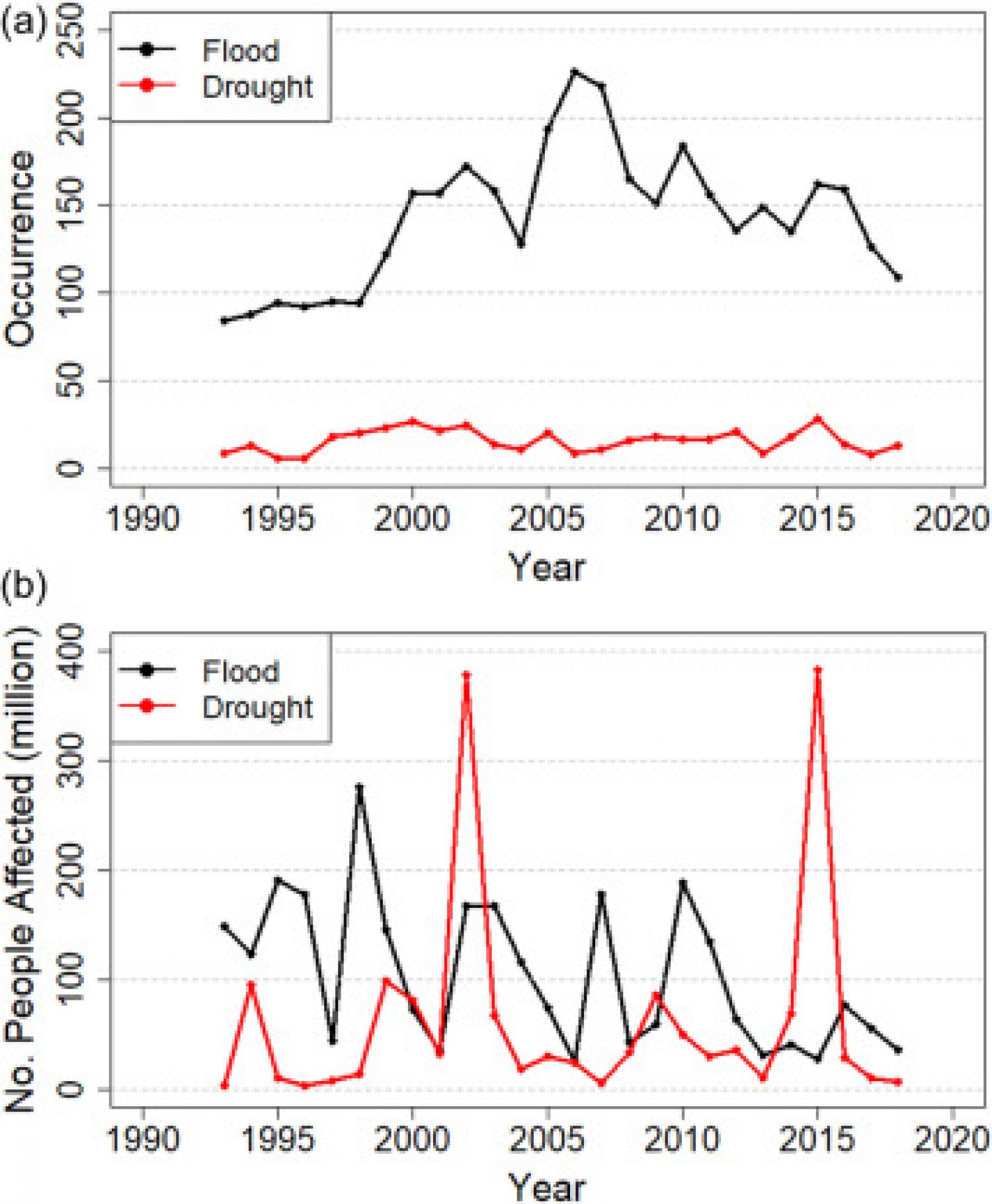
While the frequency and intensity of floods and droughts have dramatically increased over the past century, there is limited epidemiological evidence on the health impacts of these disasters. The paper examines the global trends and main health impacts of these events based on databases and case studies, identifies gaps in the Sustainable Development Goals (SDGs) indicator framework for monitoring health impacts of disasters and suggests recommendations to address these gaps. Natural disaster data and 38 case studies published from 2008 to 2018 were reviewed, and measures of association (Risk Ratio, Odds Ratio, and Incidence Rate Ratio) were extracted from the case studies for quantitative analysis. The findings of the review indicate that the SDGs lack of multifactorial disease and mental health risk factors, as well as water-borne disease indicators, misses critical health-associated impacts of floods and droughts. In particular, the narrow focus on suicide as an indicator of mental health overlooks how anxiety disorders or post-traumatic stress disorder (PTSD) can also have severe consequences for those affected by disasters. Health must be included in resilience-building initiatives at the individual, community, and national levels. The findings of the study suggest that further implementation research of the Sendai Framework and disaster risk reduction (DRR) efforts can contribute to the development of the broadly framed concept of health resilience to meet the needs of people at risk in disasters.
